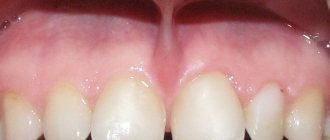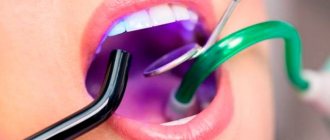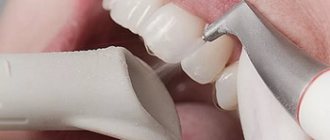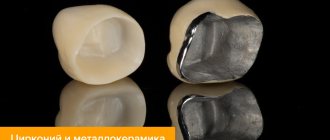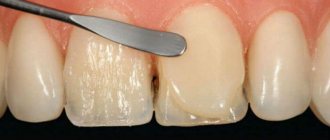The lingual frenulum is a thin fold of the oral mucosa that stretches from the middle of the tongue to the base of the gums in the area of the lower front incisors.
Thanks to the existence of such a membrane, the tongue is held in the correct position and is not swallowed.
However, the tongue frenulum may be shorter than necessary. In boys, this anomaly occurs 2 times more often than in girls. This feature is often hereditary.
Short frenulum of the tongue in newborns
A short frenulum is usually detected in infancy.
The tongue plays one of the most important roles during the feeding process of babies. It helps draw the nipple into the correct position in the mouth, creating a groove along its length to hold the nipple in place and collect milk before swallowing.
A short frenulum of the tongue leads to disruption of the sucking process in infants, as well as to inflammatory diseases of the oral cavity
In the future, a short frenulum becomes the cause of problems with diction.
In infancy, the pathology is diagnosed by a pediatrician, and in preschool age by a speech therapist.
Signs of anomaly
Among the signs of the presence of a short frenulum of the tongue, it is worth noting: during the period of raising the tongue, it takes on a heart-shaped shape; the tongue cannot be pulled out so that the tip takes on a sharp shape; when protruding the tongue, its tip looks down; it is difficult to chew and swallow, and babies have a disturbed sucking reflex; altered diction and difficulties during the conversation; bite changes; periodontal diseases.
It is quite difficult to independently identify the pathology, since in the presence of a slight shortening of the frenulum, all symptoms are washed away. It is for this reason that it is necessary to consult a dentist. Newborns are examined by pediatricians, and children can also be shown to surgeons.
Content:
- Signs of anomaly
- Indications for lingual frenuloplasty
- Contraindications to the procedure
- Tongue frenuloplasty (laser or scalpel)
- Recommendations after surgery
Safety and contraindications
The operation is safe for adults and children of any age. However, there are contraindications to its implementation:
- acute infectious and viral diseases;
- inflammation of the oral mucosa;
- any cancer;
- hematological diseases;
- the presence in the oral cavity of teeth with caries or pulpitis, as well as inflammatory gum disease.
Indications for lingual frenuloplasty
In infancy, the pathology entails a number of serious disorders: complicated swallowing, impaired sucking function, the child does not gain weight well, and as a result, deviations in development and growth are observed. A pediatric neonatologist can immediately determine the presence of ankyloglossia after the baby is born. The lingual frenulum in newborns is avascular and muscleless, therefore, it can be easily cut with scissors without the need for sutures. After cutting the frenulum, it is important to place the baby on the chest - this way the wound will heal as quickly as possible.
After a simple dissection of the frenulum has been carried out, over time a scar may form in that place, which in the future needs to undergo plastic surgery.
It is important to understand that with age, vessels appear in the frenulum. If there are complications with speaking, chewing or swallowing, tongue frenuloplasty is indicated for children of school age and older.
In preschool age, the anomaly is identified by a speech therapist. The child does not pronounce palatal whistling and hissing sounds. It is the speech therapist who determines during classes that it is difficult for the child to stick out his tongue and perform simple speech therapy exercises.
After frenuloplasty, speech will not be restored on its own, therefore, children with speech pathology need to undergo courses of correctional classes with a speech therapist.
Among the orthodontic indicators for plastic surgery it is worth noting:
- poorly developed lower jaw;
- incorrect inclination of the lower and upper incisors;
- difficulty in securing orthodontic structures.
Before proceeding with any orthodontic manipulations, it is mandatory (if necessary) to undergo plastic surgery of the lingual frenulum.
The procedure can be recommended not only for children, but also for adults, at the stage of orthopedic therapy. Improper functioning of the sublingual tissues can provoke the removal of lower jaw dentures during chewing or speaking. It is important to carry out plastic surgery before installing dental implants, since ankyloglossia can provoke the development of peri-implantitis - disturbances in tissue nutrition around the implant, the coils of the implant become exposed, and as a result, the prosthesis may simply fall out.
Plastic surgery of the frenulum of the tongue may be necessary: for preventive purposes, in case of pathological mobility of teeth, in case of recession, the presence of pathological pockets in the anterior part of the lower jaw, in the presence of periodontal diseases.
What does a shortened frenulum look like?
Violation of the frenulum length can be understood in three ways:
- Firstly , the baby cannot stick its tongue out of its mouth, only slightly raising and lowering its edge. To test this reflex, you can run your finger over your baby's lips. In a normal reaction, the baby sticks his tongue out quite far, moving it around his lips in search of mother's milk.
- Secondly , the surest way to identify a small frenulum is to watch your child cry. When screaming, the tongue should rise strongly, and if there is a disease, only the very tip will lift up.
- Thirdly , a child with a frenulum defect cannot reach the palate with his tongue.
If these signs are not enough for parents to be convinced of the need for treatment, they can contact any pediatrician for a diagnosis.
The photo shows a short frenulum of the tongue
Tongue frenuloplasty (laser or scalpel)
There are two types of operations for ankyloglossia: frenuloplasty (plastic surgery of the lingual frenulum) and frenulotomy (dissection of the lingual frenulum).
Plastic surgery can be performed using the classic surgical method using a scalpel, or a special laser can be used. The procedure is performed on an outpatient basis using local anesthesia.
The classic method with a scalpel involves careful and careful excision of old scars and mucous cords, and, if necessary, the place of attachment of the frenulum is transferred from the edge of the tongue to the middle. After surgical procedures, independent sutures are applied, which will dissolve over time. During the operation, the doctor closely monitors the condition of the submandibular and sublingual salivary ducts, so as not to accidentally catch them. If the salivary glands are disrupted, the flow of saliva can be disrupted.
Best materials of the month
- Coronaviruses: SARS-CoV-2 (COVID-19)
- Antibiotics for the prevention and treatment of COVID-19: how effective are they?
- The most common "office" diseases
- Does vodka kill coronavirus?
- How to stay alive on our roads?
Laser intervention has a number of advantages: there is no need to apply stitches; fast healing; filigree; ergonomics; no bleeding; bacteriostatic and bacteriological effects. During the operation, local anesthesia is used. The procedure requires dexterity, attentiveness, precision of movements and the experience of the doctor. The duration of laser intervention, excluding the preparatory period, can range from 3 to 5 minutes. A bandage with drugs that accelerate healing is carefully applied to the resulting wound. After the procedure, the patient will no longer notice the wound on the 3rd day.
Laser therapy is more comfortable and safe.
Types of lingual frenulum anomalies
Normally, the frenulum is located in the middle of the tongue and its length is about 3 cm.
In case of pathologies, the membrane usually differs in length or has an incorrect attachment (moves from the center of the tongue to its tip). This anomaly is called ankyloglossia (short frenulum). Most often, when the frenulum is shortened, jaw development is delayed and the bite is disrupted. Often this pathology is diagnosed in infants.
With ankyloglossia, babies often eat poorly and get tired quickly. This leads to poor weight gain and developmental delays in the child.
Causes
Why can a child be born with a shortened frenulum and what causes this disorder? Very often, ankyloglossia is hereditary, occurring in relatives.
In addition, the causes of congenital shortening of the frenulum may be:
- viral pathology of a pregnant woman (first or last trimester);
- long-term toxicosis;
- chronic illnesses during pregnancy;
- stressful conditions during pregnancy;
- intoxication in the first trimester of pregnancy (taking strong drugs, alcohol, chemicals, etc.);
- unfavorable environmental conditions;
- injuries or bruises in the abdominal area of a pregnant woman.
Signs of ankyloglossia
In what case can one suspect that something is wrong with the frenulum of the tongue and it is necessary to see a doctor? The following manifestations may indicate pathologies of the tongue membrane:
- The frenulum is shortened in front and resembles a transparent film without visible vessels. Only with age does the vascular network become noticeable.
- The tongue is severely limited in mobility: its tip is attached to the bottom of the mouth.
- You can fold your tongue into a groove: you can hear clicking sounds.
- Diagnosis of a short frenulum in children under 3 years of age is simple: if a child can easily reach the upper palate with the tip of his tongue, then the length of his frenulum is normal.
If asking a child to reach the upper palate with his tongue causes any discomfort and he does this with difficulty, this may indicate pathology.
In young children, ankyloglossia manifests itself with the following symptoms:
- long and frequent feedings;
- breastfeeding causes crying, arching of the body or throwing back of the head;
- “clattering” and biting the mother’s breast during sucking;
- poor weight gain in infants;
- refusal to breastfeed.
However, sometimes the pathology can be noticed only at an older or adult age. In this case, the following manifestations may indicate ankyloglossia:
- periodontitis;
- broken bite;
- inability to tightly fix dentures or implants;
- violation of sound pronunciation (more often hissing sounds or sounds “r”, “l”, “t”, “d”, etc.);
- difficulty licking with the tongue, sticking it out of the mouth, or reaching the roof of the mouth with the tongue;
- difficulty chewing and swallowing solid food (the need to place a food lump at the bottom of the tongue for swallowing).
Also, at an older age, shortening of the frenulum of the tongue may be indicated by the following features of the appearance of the tongue:
- the tongue appears humpbacked;
- bifurcation of the tip of the tongue and its deepening when stretched;
- the lower incisors are turned inward.
Complications of a short frenulum
Most often, the pathology of the lingual frenulum becomes known from early childhood. Some parents believe that there is no need to worry about a short frenulum and that everything will go away on its own. However, untreated shortening of the frenulum can lead to the following unpleasant consequences:
- Difficulty chewing food in older children;
- malocclusion;
- poor diction;
- a quiet, expressionless or nasal voice;
- salivation;
- snoring during sleep and breathing disorders (apnea);
- the appearance of oral diseases (gingivitis, periodontitis);
- formation of mouth breathing and a tendency to frequent colds;
- poor digestion, belching;
- the appearance of scoliosis.
Recommendations after surgery
After the operation, it is recommended to: refuse food in the first few hours; up to 4 weeks the diet should not contain hard, salty, spicy and sour foods; try to talk less; use soluble antiseptics for rinsing the mouth after eating food for a week; Apply keratoplasty to the wound within a week; After healing, it is recommended to engage in special speech physical education.
More fresh and relevant information about health on our Telegram channel. Subscribe: https://t.me/foodandhealthru
We will be grateful if you use the buttons:
Is treatment for a defect always necessary?
In most infants, this pathology has only a minor effect on health, and sometimes is not diagnosed at all.
Typically, indications for surgery include serious developmental problems in the infant.
In most infants, this pathology has only a minor effect on health, and sometimes is not diagnosed at all.
If a defect is detected in a 5-year-old child, treatment is not prescribed. It will no longer be advisable, since it will not correct the bite and speech.
It is much more effective to correct the position of the teeth and develop the speech apparatus from the appropriate specialists.
Surgery to change the foreskin
To have surgery or not?
Main indications for surgery
Serious tension on the frenulum during sexual intercourse;- Phimosis;
- Premature ejaculation;
- Multiple scars, as well as tears in the frenulum;
- Pain during sexual intercourse;
Main contraindications to surgery
- The presence of sexually transmitted diseases;
- Poor blood clotting;
- Oncological diseases;
- Kidney diseases;
- Autoimmune diseases;
- Inflammatory and infectious diseases.
All about the operation
Way
Surgical intervention to remove the frenulum is performed by transversely dissecting the frenulum, after which it is sutured longitudinally. In another case, the frenulum is completely removed. This operation can prevent rupture of the foreskin frenulum in the future.
Hospitalization is not required for the operation. Healing occurs within ten to fourteen days, and sex is also prohibited during this recovery period. This procedure is carried out using laser technology, depending on the indications.
Duration
The operation itself lasts about thirty minutes under local anesthesia. The technique itself consists in making an incision across the genital organ, then suturing it in the longitudinal direction. This procedure makes it possible to eliminate excessive tension on the foreskin and will turn your frenulum into an almost invisible seam, which will turn into a natural “suture” at the bottom of the genital organ.
Complications
This operation also has complications, but they are very rare. Most complications arise from infection introduced during the operation in the form of simple bleeding.
And, nevertheless, it is necessary to take into account that in the place where the foreskin is located, there are no large vessels, which is why all bleeding is not life-threatening and can disappear at home.
In order to exclude the possibility of infection, doctors will prescribe you various types of antibiotic-based creams; they are advised to use them for three to seven days.
Inspection
In general, examination by a doctor is carried out on the second day after the operation itself, and after seven days. In general, the operation itself is not very complicated and quite painless, and the recovery period can go very quickly and without any complications.
This operation can also be performed using a laser. The advantages of this method are that the use of laser technology minimizes the risk of introducing various infectious diseases. The rehabilitation period in this case is reduced by half.
But there is an opinion in the world that removing the frenulum using a laser is not a very effective procedure, because the anatomical structure of the genital organ implies its constant movement, changes in its stretch and size, which is very often considered the cause of suture divergence. But only the patient can choose which method is better - classic or laser, everything goes according to the wishes of the patient, as well as medical indications.
Another important point is that the urologist, before the operation itself, is obliged to prescribe examinations and tests, which include consultations with a therapist, anesthesiologist, blood tests, in some cases according to the testimony of other specialists, and also an electrocardiogram. If all the necessary tests are present, the operation can be carried out on the same day of treatment.
After removal of the foreskin frenulum, the patient has the opportunity to immediately go home. The next day he must come for an examination, or remain in the hospital for observation. Basically, the method of performing the operation does not depend on when you can begin to be sexually active again. Both in the classical and laser methods, sex is allowed after fourteen days from the end of the operation. We also advise you to avoid physical activity.
In order to avoid complications and speed up healing, we recommend:
- Abstain from sexual intercourse until the end of the recovery period (fourteen days);
- Treat the healing area only with medications prescribed by your doctor;
- Follow absolutely all the doctor’s instructions;



